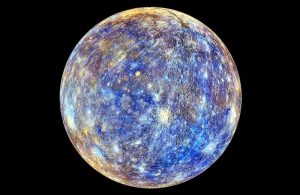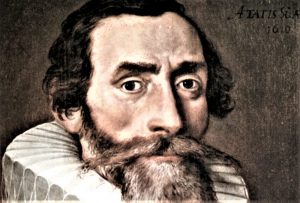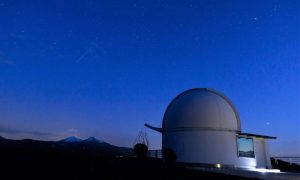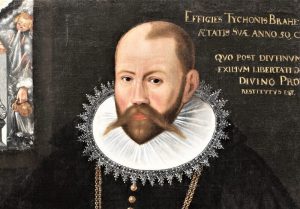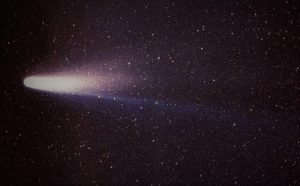Nicolaus Copernicus
Among the most representative astronomers of the Renaissance there is one that stands out from many others. This is Nicolaus Copernicus, a Polish astronomer and mathematician who first formulated the heliocentric theory and who is the main creator of the scientific revolution in the European Renaissance, also called the Copernican revolution.
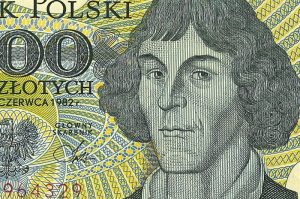
Personal Information
- When he was born: 19/02/1473
- When he died: 24/05/1543
- Nationality: Polish
- Main work: Heliocentric theory
Who was Nicolaus Copernicus?
Nicolaus Copernicus (1473-1543) is a Polish Renaissance astronomer known for creating the Heliocentric System theory, in which six planets, including the Earth, revolved around the Sun. Nicolaus Copernicus performed many functions in his life and was always connected with religious theme. Among the works that he carried out are those of mathematician, astronomer, canonical, doctor, jurist, military, diplomat, among others. Currently, Nicolaus Copernicus is considered the father of modern astronomy, which is why the astronomical revolution is also called by its name Copernican revolution, in which the paradigms of a geocentric universe were changed to a heliocentric system.
Nicolaus Copernicus is considered by many as modern astronomy founder and besides standing out in this discipline, he was also a mathematician, jurist, physicist, military leader, diplomat, cleric, governor and economist.
Copernicus’ heliocentric theory stated that the Earth and other celestial bodies revolved around the Sun; this was contrary to the one of his time which was geocentric (where the center of the universe is the Earth).
Nicolaus Copernicus biography
Nicolaus Copernicus was born on February 19, 1473 in Thorn (now known as Torun) in Prussia, Poland.
Between 1491 and 1494 he studied mathematics at Krakow University under the tutelage of his maternal uncle Lucas Watzenrode, canon of Frauenburg Cathedral and later bishop of Warmi.
Then, between 1496 and 1499, he travelled to Italy to study law, Greek, medicine and philosophy at Bologna University. In those years, he worked as assistant for the astronomer Domenico da Novara.
Having finished his studies, Copernicus moved to Rome to study science and astronomy.
In 1501, he returned to Poland to be named canon of Frauenburg Cathedral, thanks to the support of his uncle Watzenrode. Although he was a canon, Copernicus did not give up his studies and returned to Padua, Italy, to study law and medicine. In 1503, in Ferrara, he obtained a doctorate in canon law.
In 1507, Nicolaus Copernicus develops his first heliocentric astronomical system exhibition, in which six planets, among them the Earth, orbit around the Sun, a theory opposed to the Ptolemaic system in which the Earth was the center and the planets orbit around it.
In 1523, he returned to his country where he settled permanently and practiced medicine, administered the Warmia diocese and developed his research in astronomy.
Nicolaus Copernicus dies on May 24, 1543 in Frombork, Poland from a stroke and paralysis. He was buried in Frombork Cathedral.
In 2005, a group of archaeologists looked for his remains in the cathedral and when they found a tooth, thanks to a DNA analysis, it was determined that the bones discovered belonged to Nicolaus Copernicus.
In 2010, Nicolaus Copernicus receives another funeral in the same cathedral directed by the Primate of Poland, Jozef Kowalczyk, who inaugurated in that moment a black granite tombstone in honor of this great character in which he is identified as the creator of the heliocentric theory.
Nicolaus Copernicus’ thought
In Nicolaus Copernicus’ thought, his ideas were opposed to the ideas of his time, which, by that time, were based on Geocentrism, where the Earth was the center of the Universe. The Heliocentrism proposed by Copernicus proposes a system of circles around the Sun and makes the Sun the center of the universe.
But this thought goes beyond a planetary system, since it proposes other ways of seeing the stars according to their movements seen from the Earth, which explains certain retrograde or direct displacements of the planets where they are not the ones that really move, but it is the earth that gives this illusion.
In this sense, it is important, how observation and reason are an important part of Nicolaus Copernicus’ discoveries and his contribution to humanity.
Nicolaus Copernicus’ contributions
The work of Nicolaus Copernicus has generated great contributions to humanity in both scientific and philosophical fields.
In scientific field, Nicolaus Copernicus is recognized as the father of modern astronomy, as he presented a method that reasonably describes the planets and their trajectories in the solar system. This had not happened before as the astrological study methods were incomplete and confusing. In this regard, Copernicus provides theories that can be confirmed as true, and that gave place to new modern discoveries in astronomy.
In philosophical field, Nicolaus Copernicus uses reason to develop his research, giving to man a place in the universe and showing how rationally he should be part of it. Moreover, through his works, he allows man to become more aware of the environment that surrounds him at a spatial level and about perceptions that one can have about an object when one is the one who moves in the universe.
For all its great contributions to humanity, the scientific revolution of its time is also known as the “Copernican revolution“.
Works by Nicolaus Copernicus
Nicolaus Copernicus’s most outstanding work is “De revolutionibus orbium coelestium” (On the turns of the celestial orbs) developed between 1507 and 1532. In this work, heliocentric theory is exposed, which affirms that the planets, among them the Earth revolve around the Sun. This work was published posthumously in 1543.
This research is divided into six books:
- Book I: Presents the heliocentric theory and its cosmology. It discusses the celestial bodies orbiting the Sun. In his last chapters he presents theorems for string geometry.
- Book II: Describes the basics of spherical astronomy and describes fixed stars.
- Book III: It exposes an investigation on the equinoxes and the displacements of the Sun.
- Book IV: Explains the orbital displacements of the Moon and describes it as the celestial body.
- Book V: Proposes how to calculate the location of stars according to the heliocentric model and presents tables of the five planets.
- Book VI: Digressions of latitude between the five planets and their displacements are presented.
In addition, there are other works in which “Commentariolus” (small comments) stands out, a draft of forty pages of what would later be the work “De revolutionibus orbium coelestium” and the “Heliocentric Theory” where the Sun is presented as the center of the System in which we live.
In the “Heliocentric Theory”, Nicolaus Copernicus presents ideas contrary to his time on astrology. Among the ideas presented in this document, the following can be mentioned:
- The center of the universe is the Sun.
- The celestial movements are uniform, conformed by diverse cycles and circulars.
- The following planets orbit around the Sun: Mercury, Venus, Earth, Moon, Mars, Jupiter and Saturn.
- The planet Earth has three movements: translation, rotation and the inclination of its axis.
- The retrogradation movement of celestial bodies is explained by the displacement of the Earth.
How to cite this article?
Briceño V., Gabriela. (2019). Nicolaus Copernicus. Recovered on 24 February, 2024, de Euston96: https://www.euston96.com/en/nicolaus-copernicus/



